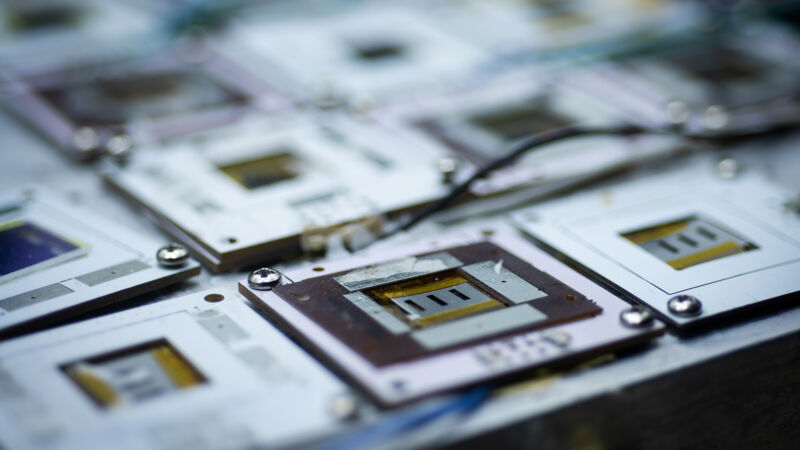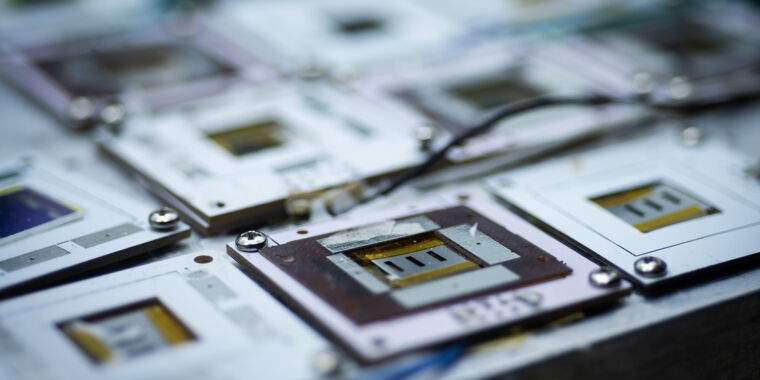
Bumper DeJesus
While silicon-based solar cells dominate the photovoltaics market, silicon is far from the only material that can effectively harvest electricity from sunlight. Thin-film solar cells using cadmium and telluride are common in utility-scale solar deployments, and in space, we use high-efficiency cells that rely on three distinct materials to harvest different parts of the spectrum.
Another class of materials, which we’re currently not using, has been the subject of extensive research: perovskites. These materials are cheap and incredibly easy to process into a functional solar cell. The reason they’re not used is that they tend to degrade when placed in sunlight, limiting their utility to a few years. That has drawn the attention of the research community, which has been experimenting with ways to keep them stable for longer.
In Thursday’s edition of Science, a research team from Princeton described how they’ve structured a perovskite material to limit the main mechanism by which it decays, resulting in a solar cell with a lifetime similar to that of silicon. While the perovskite cell isn’t as efficient as what is currently on the market, a similar structure might work to preserve related materials that have higher efficiencies.
Why perovskites?
Perovskites aren’t a single material; instead, they’re a large family of chemicals that adopt a similar configuration when crystallized. They can be formed from a variety of elements and even incorporate organic chemicals as one of the ions present in the crystal. This flexibility means that, despite the structural similarity, perovskite crystals can have distinct properties based on the chemicals that make up that structure.
These properties sometimes include a strong photovoltaic effect (if they didn’t, this would be a very short article). The materials have a number of advantages compared to the ones we’re using for solar cells. For starters, they can often be made from very cheap raw materials—lead is one of the more commonly used elements in photovoltaic perovskites, for example.
It’s also relatively simple to get perovskites to form high-quality crystals when they precipitate from solution, making them much easier to work with. Solution processing is inexpensive and easy to scale, and it can potentially apply photovoltaic layers to a range of materials and surfaces.
So why is almost everyone still using silicon? To begin with, perovskites tend to be far less efficient at converting photons to electricity than the competition. That has been a significant factor in part because most of the expenses in solar installations come from permits and installation costs, which puts some premium on getting the most out of every panel you install.
Recent developments have identified perovskites that hold efficiencies similar to that of silicon—at least for a while. Unfortunately, the performance of most perovskites decays rapidly since the crystal structures they form tend to break down over time as they’re exposed to light. Most perovskites we’ve tested would lose a significant percentage of their production within a year, and few have the stability to maintain high productivity beyond five years.








